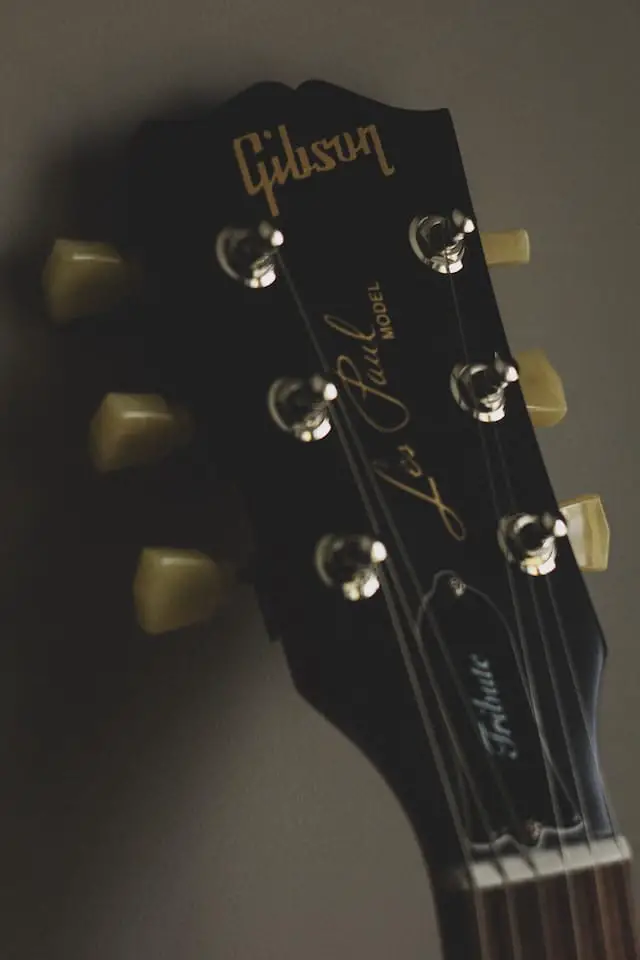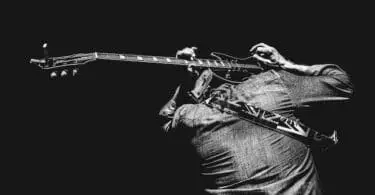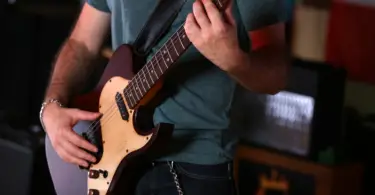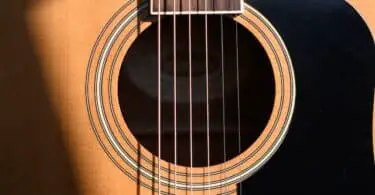The guitar is a beautiful instrument, but it is also a complicated instrument. Every component on the guitar is critical and contributes directly to the way the instrument sounds, how it feels to play, and the overall capabilities of the instrument. There are also several types of guitar that have unique anatomical features. Understanding the anatomy of the guitar that you play is crucial for getting the most from the instrument.
The main anatomical components of every guitar type include the headstock, tuners, neck, fretboard, frets, nut, body, bridge, and saddle. Each of these components contributes to the sound, feel, and playability of the instrument. These components are integral to all guitars.
There are several components in every type of guitar, and each part has its own critical function and contributes to the overall sound, feel, and playability of the instrument. Let’s explore the various aspects of guitar anatomy and identify the fundamental function of each important component.
Quick Links
Universal Guitar Anatomy
There are three main types of guitars: electric guitars, steel-string acoustic guitars, and classical guitars. All of these instruments share the same basic features and components that make them a guitar, but they all have unique features that differentiate them from one another.
Let’s identify the common anatomical features that all guitars share.
The Headstock
Every guitar has a headstock. The guitar headstock is the part of the instrument at the top of the neck and forms a mounting position for the tuners and hardware that hold the strings onto the guitar.

The headstock can be of various shapes and sizes, but every headstock serves to attach one end of the guitar strings to the instrument and provides a mounting point for the necessary hardware required to keep the strings in tune.
The Tuners
Guitar tuners are mounted on the headstock of the instrument. These small components attach one end of the strings to the instrument and feature a gear and a tuning post that tighten the guitar strings and hold them under tension.
This keeps the guitar strings in tune and prevents them from slipping out of the required tension for playing the instrument. All guitars have one tuner per string, and tuners are always mounted on the headstock.
The Neck
The neck of the guitar is the part of the instrument that connects the body to the headstock and has the fretboard mounted to it, which allows the instrument to be played.

There are various types of guitar necks depending on the type of instrument, the size of the instrument, and how many frets the guitar has.
The neck is a crucial component for playing the guitar, but it also helps to provide tension and rigidity for keeping the strings in tune.
The Fretboard And Frets
The fretboard is a piece of wood mounted to the face of the guitar neck, and upon the fretboard are mounted the frets. The frets are metal rods that the guitarist presses the strings over to change their pitch and, in turn, change the note the string produces.
The frets are how the guitar is played and provide note accuracy over the entire fretboard.
The Nut
Every guitar is equipped with a nut. The nut is a small but crucial component of every guitar. The nut is a small, slotted piece of bone, plastic, or other synthetic material attached to the top end of the fretboard, below the headstock.
The nut provides a point of resonation for the strings, which lets them vibrate when played, and the grooves in the nut keep the strings aligned on the instrument. This tiny component is a major factor in the tone of the guitar.
The Body
The body of the guitar is the largest component of the instrument and provides a resonation chamber in acoustic guitars and a mounting point for guitar hardware such as pickups in electric guitars.
The guitar body contributes to the tone of the instrument. Guitar bodies are typically made from wood, and the type of wood the body is made of, as well as how the body is constructed, determines how good the instrument will sound when played.
Acoustic guitar bodies resonate and amplify the sound of the strings when they are played, creating the sound of the instrument. Electric guitar bodies house the guitar pickups and hardware that generate the sound and tone of the instrument.
The guitar body is the most varied component across guitar types and can be made to any shape or size depending on the intended sound and tone of the instrument.
The Bridge And Saddle
The bridge forms the opposite string anchor point to the headstock. One end of the guitar strings are attached to the headstock by the tuners, and the other end of the strings are attached to the bridge of the guitar.
There are different types of bridges depending on the type of guitar and the tuning stability system the guitar is equipped with.
Every guitar bridge is mounted to the body of the instrument and provides tension for the strings and a mounting point for the string saddle or saddles.
The guitar saddle is the opposite resonation point to the nut. The strings of the guitar are stretched over the saddle, providing a point for the strings to resonate against, allowing them to produce a tone.
There are different saddles on different guitar types. Some guitars have one saddle under all of the strings, and other guitars have individual saddles per string.
The Strings
Very guitar, regardless of type, shape, or size, must have strings. The strings are what generate the sound of a guitar, provide all o the notes that the instrument can play, and they are the aspect of the instrument that contributes most to the way it sounds.
Most standard guitars are equipped with six strings, each one being a different thickness and thus producing a different range of notes.
The strings are attached to the instrument at the bridge and the headstock, and they resonate against the nut and the saddle.
As the strings vibrate, they produce musical notes, which can then be amplified by the body of an acoustic guitar, or the pickups of an electric guitar are used to make music.
Conclusion
All guitars have the same basic anatomy, and these features are what make the instrument what it is. If a guitar is not equipped with any of these major features, the instrument simply will not function well. All of these major components are critical to the functionality, playability, and sound of the guitar.
All of the anatomical components of the guitar contribute to how the instrument is played and the way it sounds, and understanding them all will help you to get the most from your instrument. Take the time to explore and understand each guitar component, and you will understand the guitar on a deeper level overall.







